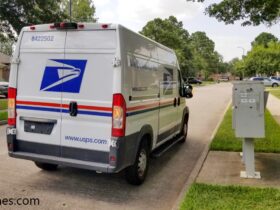Exploring the realm of vehicle tracking system can be likened to traversing unexplored territory. Nonetheless, have no dread, fellow traveller. Your very own GPS tracker will be running like a charm if you follow the instructions and add a little bit of knowledge. Your vehicle will be protected from theft and within your grasp at all times with the best car immobiliser tracker.
Read the User Instructions and Diagrams:
Prior to commencing this expedition, it is imperative that you familiarise yourself with the terrain. Invest some time in thoroughly reviewing the user manuals and diagrams that are included with your vehicle tracking system device. These indispensable resources function as navigational aids, effortlessly directing you throughout the installation procedure. Take this measure seriously; view it as your road map to success.
Activating the Tracker Online:
Now that you have obtained your roadmap, you can initiate the activation procedure. To activate your device, navigate to the specified online platform for your vehicle tracking system and follow the on-screen instructions. A vital connection is established between your tracker and the wide network of satellites above via this digital handshake. Comparable to turning on a beacon in the dark, this action illuminates your trajectory in advance, establishing the foundation for the uninterrupted vehicle tracking system that follows.
Inserting the SIM Card:
Every tracker requires a voice, and a SIM card provides that voice. Slightly insert the SIM card into the designated compartment, thereby establishing communication between the tracker and itself regarding its location. Comparable to refueling a vehicle prior to an extended voyage, your tracker will be unable to transmit its critical data if you fail to provide it. You are one step closer to maximising the capabilities of your vehicle tracking system once it has been inserted.
Hiding and Fixing the Trackers in Vehicles:
Presently, the covert phase commences: concealing and repairing the tracker within the vehicle. In this situation, discretion is crucial. Achieving maximum inconspicuousness with your tracker is akin to having a mute sentinel observe your vehicle from the shadows. Follow these covert guidelines to maintain the secrecy of your tracker:
In order to maintain an element of surprise, the GPS tracker ought not to be readily obtainable. This safeguards the tracker against unauthorised access or tampering by unsuspecting individuals.
Strategic Placement:
Place the device in the region of service access, such as under the dashboard. By strategically positioning your tracker, you can guarantee optimal signal reception without drawing attention to it.
Secure Fastening:
Use double-sided tape or zip ties to securely fasten the tracker to a smooth surface. For increased stealth, remember to invert the device; doing so is equivalent to concealing in plain sight.
Avoiding Obstacles:
Keep your tracker away from metal surfaces and cables, as these can interfere with its signal. Additionally, avoid contact with moving or heat-generating components to prevent device damage.
Steady Ground:
Because the device includes an accelerometer, it’s sensitive to movement. Sustain its installation in a stable, vibration-free area to guarantee precise tracking.
Test Drive:
Prior to affixing the tracker, verify the correct operation of the GPS system. Examine it for lights, tones, an online display, or sample data before giving it a try. To verify connectivity in regions with inadequate network coverage, a brief demonstration drive spanning 3-5 km may be required.
Setup and Connection Points:
As soon as the tracker has been firmly installed, the configuration must be completed by establishing connection points to ensure optimal performance. Analogous to establishing the foundation for a robust bridge, this stage involves fortifying the dependability of your vehicle tracking system with each connection point. To assure a firm foundation, follow these steps:
- Network Connectivity: It is imperative to verify that the tracker is linked to a dependable network that provides sufficient coverage. A robust network connection facilitates uninterrupted communication between your device and the online platform, serving as the lifeblood of your vehicle tracking system.
- Power Source: Ensure that the tracker is powered by either the vehicle’s battery or a dedicated power source, depending on its specific model. A consistent power supply ensures that your tracker remains operational and prepared to provide updates without delay.
- Data Transmission: Confirm that the data being transmitted by your tracker to the online platform is proceeding successfully. Consistently monitor the platform for updates and valuable information regarding the location and performance of your vehicle.
- User Accessibility: Become acquainted with the online platform’s user interface so that accessing and interpreting the data supplied by your tracker is effortless. Ultimately, the real efficacy of a monitoring system resides in its capacity to provide you with practical and implementable insights.
Conclusion:
Upon the effective installation and activation of the vehicle tracking system, the vehicle is now equipped with enhanced security and dependability. It is imperative that you maintain a state of constant vigilance and proactivity while vehicle tracking system the location and performance of your vehicle as you commence your forthcoming journey.












Got a Questions?
Find us on Socials or Contact us and we’ll get back to you as soon as possible.